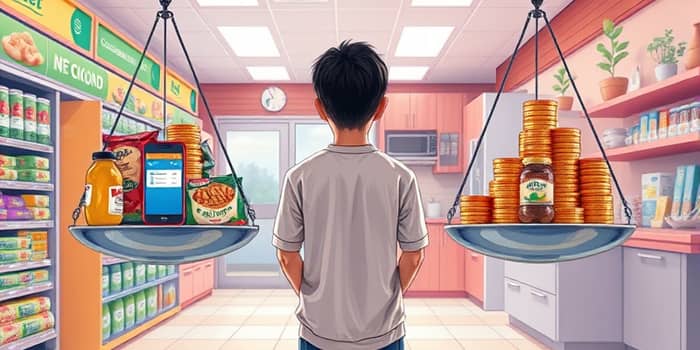
Every day, millions of consumers choose the easy route—grabbing a ready-to-eat meal, tapping an app for delivery, or sliding into a convenience store for a quick purchase. But behind every swipe and every grab lies a web of costs that go beyond the price tag. In this article, we explore the hidden price of convenience and empower you with strategies to ensure you’re not overpaying for life’s shortcuts.
From May 2024 to May 2025, the Consumer Price Index (CPI) climbed 2.4%, signaling steady inflation across goods and services. Food costs rose even more sharply—up 2.9% overall—while groceries (food-at-home) increased by 2.2%. Dining out or ordering in surged 3.8%, outpacing home cooking and groceries combined.
Convenience stores (c-stores) reflect these shifts vividly. Although total U.S. c-store sales dipped 2.6% in 2024 to $755.2 billion, in-store sales rose 1.9%, marking the slowest growth in six years but underscoring a pivot toward food and retail goods over fuel. Consumers are paying an average of 4.1% more per item—a premium pricing model that banks on immediacy and ease.
Convenience may save time, but it often costs more money. Markups of 20–40% on everyday items—snacks, beverages, even basic groceries—are the norm at c-stores compared to supermarkets. Delivery apps tack on service fees, dynamic pricing surcharges, and in some cases, inflated menu prices to maximize profit.
To illustrate the disparity, consider this comparison:
Even small orders on third-party delivery can total up: a $15 meal may cost $20–25 once fees, tips, and algorithmic surcharges are tacked on. Over a week, those extra dollars multiply faster than most realize.
Always reaching for convenience can reshape habits and budgets. Frictionless payment and app-based loyalty often lead to impulse buys. The ease of tapping to pay can obscure how much you’re really spending.
Convenience comes with an environmental toll—single-use packaging, increased fuel consumption from delivery vehicles, and higher carbon emissions. Each disposable container, plastic bag, and delivery trip adds collectively to our carbon footprint.
Society shoulders these consequences: waste management costs rise, traffic congestion worsens, and communities bear the externalities of rapid consumption. Hidden costs that add up eventually show in public health and infrastructure budgets.
To capture our willingness to pay more, c-store chains are evolving into mini eateries. Prepared meals grew 16.3% in 2024, transforming corner stores into foodservice hubs. Technology—mobile orders, loyalty apps, data tracking—fuels revenue but also nudges us into sharing personal data for perceived benefits.
Despite a slight dip in overall sales, industry profits climbed 1.2% to $128.37 billion, driven by high-margin foodservice items. Gas price fluctuations now correlate closely with foot traffic, illustrating how consumers adjust convenience spending to broader economic pressures.
Awareness is the first step. By tracking where and how much extra you spend on convenience, you can devise practical ways to save without sacrificing all ease.
Convenience can be a powerful tool: it opens doors for busy professionals, families, and those with mobility constraints. Recognizing its value doesn’t mean ignoring its costs. Instead, it invites us to make more intentional choices.
By recalibrating when we pay for speed and when we invest a little time, we reclaim control over our finances, our health, and our environment. The next time you reach for a ready-made meal or tap a delivery app, ask yourself: Am I paying too much for this?
Non-monetary benefits of convenience—accessibility, time with loved ones, reduced stress—matter. Balance means choosing convenience judiciously and celebrating the moments when a little effort yields big rewards.
Ultimately, convenience is not a tax; it’s a tool. Used thoughtfully, it enhances our lives. Used reflexively, it can erode wealth, well-being, and the world around us. Take stock, make small changes, and you’ll find that the true cost of convenience can be managed—leaving you with both time and money to invest in what matters most.
References













